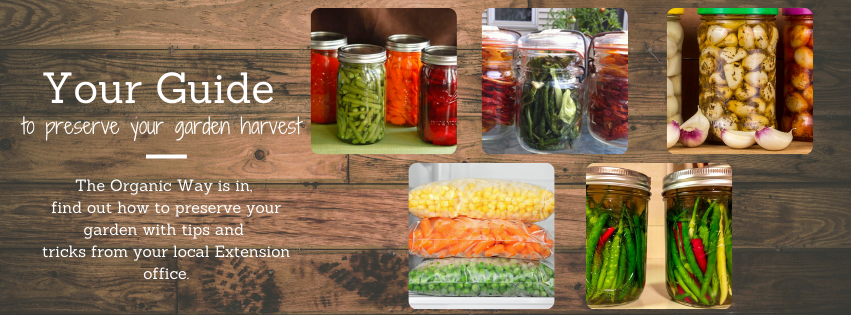There’s something so special about planting a garden, watching it grow, harvesting, and then enjoying the fruits of your labor. The years where you have a large garden yield are truly a blessing, but how can you preserve your produce so you can enjoy it year-round?
There are more ways than you might think! Here are a few more ways to preserve your garden’s harvest.
Can the Traditional Way
Many of us remember our grandparents canning fruits and veggies. It’s a useful practice that’s regaining popularity. There are two methods of canning: water bath canning and pressure canning. Water bath canning is safe for most things like jams and fruits. However, if you’d like to can meat or low acid vegetables such as green beans, you’ll need to use a pressure canner to ensure your food is safely preserved.
If you’re new to canning, it’s best to stick to tested recipes when canning the bounty of your harvest. The Farmer’s Almanac can get you started understanding the basics of canning — be sure you understand the danger of botulism if canning isn’t done correctly.
One other thing to keep in mind with canning is that the high heat levels can destroy some of the nutrient content, so it’s worth exploring other ways to preserve your harvest.
Stock Your Freezer
Another popular method for preserving foods is to stock them in the freezer. Deep freeze chest freezers are relatively affordable and allow you to freeze fruits and veggies from your garden for later use. Before freezing, most vegetables need to be blanched for 2-5 minutes in boiling water, then immediately immersed into cold water to preserve flavor. Once they are cool and dry, they can be packed in freezer bags and stored in your freezer. While not essential, vacuum sealing bags will preserve your produce for even longer.
Put Your Dehydrator to Work
Dehydrating food is a very effective way of preserving it. Purchasing a dehydrator that is specifically meant for that function is ideal. However, many people find they can effectively dehydrate foods either in their oven or in the sun. You can vacuum seal your dehydrated foods for longer-term storage.
Soak Up the Vinegar
When you hear that someone is “pickling” vegetables, it most often means they are preserving them in vinegar. Because of vinegar’s acetic acid content (it should be at least 5%), many sources say that food preserved in vinegar doesn’t need to be refrigerated.
You can also use up fresh herbs by placing them in vinegar, then allowing them to sit in the dark for up to two months. At that point, you strain the vinegar to remove the herbs and have a wonderfully flavored vinegar that you can use in dressings and more.
Infuse Some Oil
Did you know that fat, even butterfat, can act as a natural preservative? It can prevent spoilage by isolating your veggies from the air and providing a seal to delay oxidation, deterioration, and mold. Olive oil is a great choice for preserving many foods like peppers, mushrooms, eggplant, herbs, and more. You can roast peppers or eggplant, then place them in a sterilized jar and fill with oil, being sure there aren’t any air bubbles in the jar. Then store the jars in a dark place until you’re ready to use them.
Break Out the Booze
Preserving fruit in alcohol is a time-tested – and tasty – method. Simply fill your jar loosely with fruit (think berries or peaches and more). Next, heat around 3 cups of alcohol (minimum 40 proof) with ¼ cup unrefined cane sugar until the sugar is dissolved. Rum and brandy work well. Then fill the jar with the sweetened alcohol. Store and enjoy for special occasions.
Pressure Canner Lid Testing
It’s canning season! You can bring your Pressure Canning Lid to the Extension La Crosse County Office to be inspected and testing for safety and accuracy.
Our office is open Monday – Friday from 8:00am – 4:30pm. If you have any questions, you can call us at 608-785-9593.
Other Links:
Preserve What You Grow (PDF, 290 KB)
Waax (Cedar) Jelly Recipe




